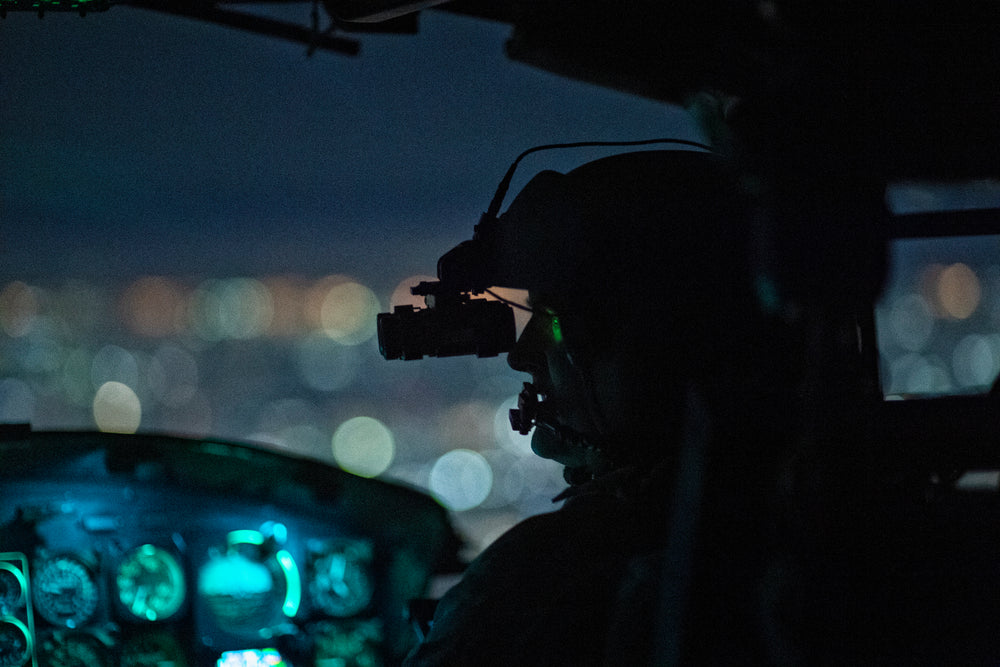Anduril Assumes Lead Role in IVAS Program - is This the End of Traditional Analog Night Vision for the Army?
Last week, private military technology contractor Anduril announced that it was assuming a primary role in further development of the IVAS project, originally begun by Microsoft to develop a military-ready version of augmented reality visual systems for the U.S. Army. The company is notably lead by the original developer of the now established Oculus virtual reality device, Palmer Luckey. This announcement has generated a degree of excitement around the IVAS project once again, which when it was initially announced in 2018 seemed to captivate followers of military technology with its radical promises and design.
Notably, the IVAS goggle system integrates a form of digital night vision sensors and displays which, although only one of a vast array of promised features, holds notable implication about the use of existing analog based image intensification systems. With the capabilities of augmented reality, heads up display integration and data streamed right to the user in a visual manner, the IVAS appeared to spell the end for comparatively ancient image intensification based systems that have been the staple of military night operations for the last three decades.
But by 2021, the IVAS project had been a very expensive R&D program resulting in a whole lot of failures, and appeared on the verge of shutting down. Enter Anduril, and now the program has been given new life. Could this finally spell the end of traditional night vision technologies, as new augmented reality and digital sensor are finally effectively integrated into an advanced, dependable system?
Not So Fast - the IVAS is a Poster Child for the Challenge of Digital Night Vision
Certainly, the prospect of Anduril getting the IVAS project over the goal line is exciting. The company brings a good deal of credibility to program given its background. It also appears hungry and innovative, with a desire to truly help America military interests.
However, without going back to the drawing board and stripping down the goals of the project and resulting technology, the IVAS project will continue to face a mountain of challenges.
The biggest issue with digital night vision has not traditionally been the capability of the individual technology components that make the magic happen - chips and sensors are already pretty effective in technical terms for seeing in the dark. The challenge has always been the effective integration of these technologies into something that is superior to the incumbent solution. Right now, the IVAS appears to be an integration nightmare, largely in part because it is so ambitious, seeking to combine numerous additional capabilities beyond just night vision.
There is a principle in manufacturing and product development that was imparted to me that I believe generally is true. Imagine you have two separate groups trying to make similar products or parts. One group is instructed to make the best product from the get go. A second group is instructed to make the most products that still achieve the primary goal.
Ironically, the group that sets out to make the most parts from the beginning also ends up making the best ones given the same amount of time.
Now, this depends on a few conditions. First, this principle applies to solving a relatively simple challenge or the creation of an individual solution to one specific thing. The IVAS is not that - it is complex, multifaceted, integrating a number of technical concepts into one cohesive product. But if we boil it down to just the night vision component, traditional image intensification is definitely the leading solution and demand for it globally is greater than ever. It has the advantage of having been produced in relatively high volumes (in terms of image intensifier tubes and complete systems) for decades.
The IVAS, on the other hand, is a project that from the get-go was ultra ambitious and seeks to leap-frog all existing capabilities in terms of night time operations and infantry operations overall. It's been conceptualized to be the best solution, but this creates an immense, perhaps impossible, integration challenge.
The Irresistible Promise of Digital Tools
Digital solutions to problems are always irresistible to many because of their connectivity to other digital solutions. The idea is that the value of whole is greater than the sum of parts. The IVAS was, until very recently, largely considered a total failure because it was unreliable, uncomfortable, and incapable. This is the challenge that digital night vision solutions face. They must supplant a technology (traditional image intensification) that has been iteratively developed for decades and as a result become the best possible solution to the problem of seeing in the dark - not just in terms of visual performance - but in dependability, lifespan, cost, and ability to be integrated into a usable tool like a goggle.
Anduril will probably need to strip down the IVAS to try to do fewer things - at least initially - to focus on being able to field it effectively in large numbers. Then build the capabilities from there.





Leave a comment